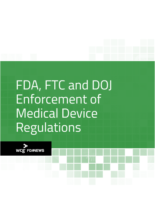
Managing and Reducing Drug and Device GxP Deviations
|
DAY ONE |
|
|
8:30 a.m. – 9:00 a.m. |
Registration and Continental Breakfast |
|
9:00 a.m. – 10:00 a.m. |
Introduction and Workshop Objectives
|
|
10:00 a.m. – 10:15 a.m. |
Break |
|
10:15 a.m. – 11:00 a.m. |
What is a Deviation or Non-Conformance?
|
|
11:00 a.m. – 12:00 p.m. |
What are the First Steps During the Discovery of a Deviation? Assessing and Classifying Deviations
|
|
12:00 p.m. – 1:00 p.m. |
Lunch |
|
1:00 p.m. – 2:30 p.m. |
Best Practices for Performing Successful and Accurate Failure Investigations
|
|
2:30 p.m. – 2:45 p.m. |
Break |
| 2:45 p.m. – 5:00 p.m. |
Qualitative Tools to Support Superior Root Cause Analysis — Discover What is Essential While Performing a Root Cause Analysis
|
| 5:00 p.m. |
Session Wrap-up |
|
DAY TWO |
|
| 8:30 a.m. – 9:00 a.m. |
Continental Breakfast |
| 9:00 a.m. – 10:45 a.m. |
Integrating Quantitative Tools Into Your Root Cause Analysis — Identify Tools and How to Integrate Them Into Root Cause Analysis
|
| 10:45 a.m. – 11:00 a.m. |
Break |
| 11:00 a.m. – 12:00 p.m. |
Root Cause Evaluation and the Decision Making Process — Follow the Data
|
| 12:00 p.m. – 1:00 p.m. |
Lunch |
| 1:00 p.m. – 2:30 p.m. |
Corrective and Preventive Actions — Managing the FDA’s #1 Inspection-Related Violation
|
| 2:30 p.m. – 2:45 p.m. |
Break |
| 2:45 p.m. – 4:30 p.m. |
Writing Useful Investigation Reports That Employees and Management Understand and Can Put Into Practice
|
| 4:30 p.m. – 5:00 p.m. |
The Final Investigation Package
|
| 5:00 p.m. |
Adjourn |
